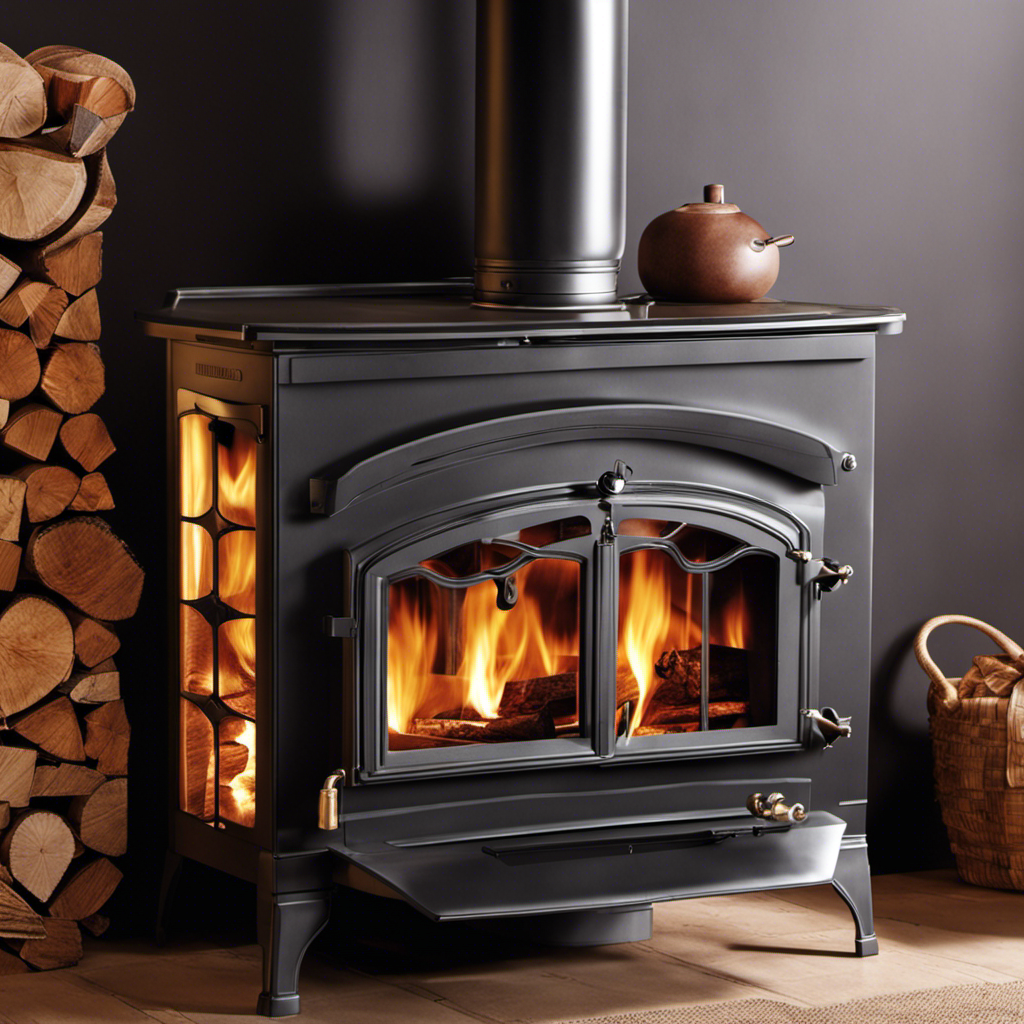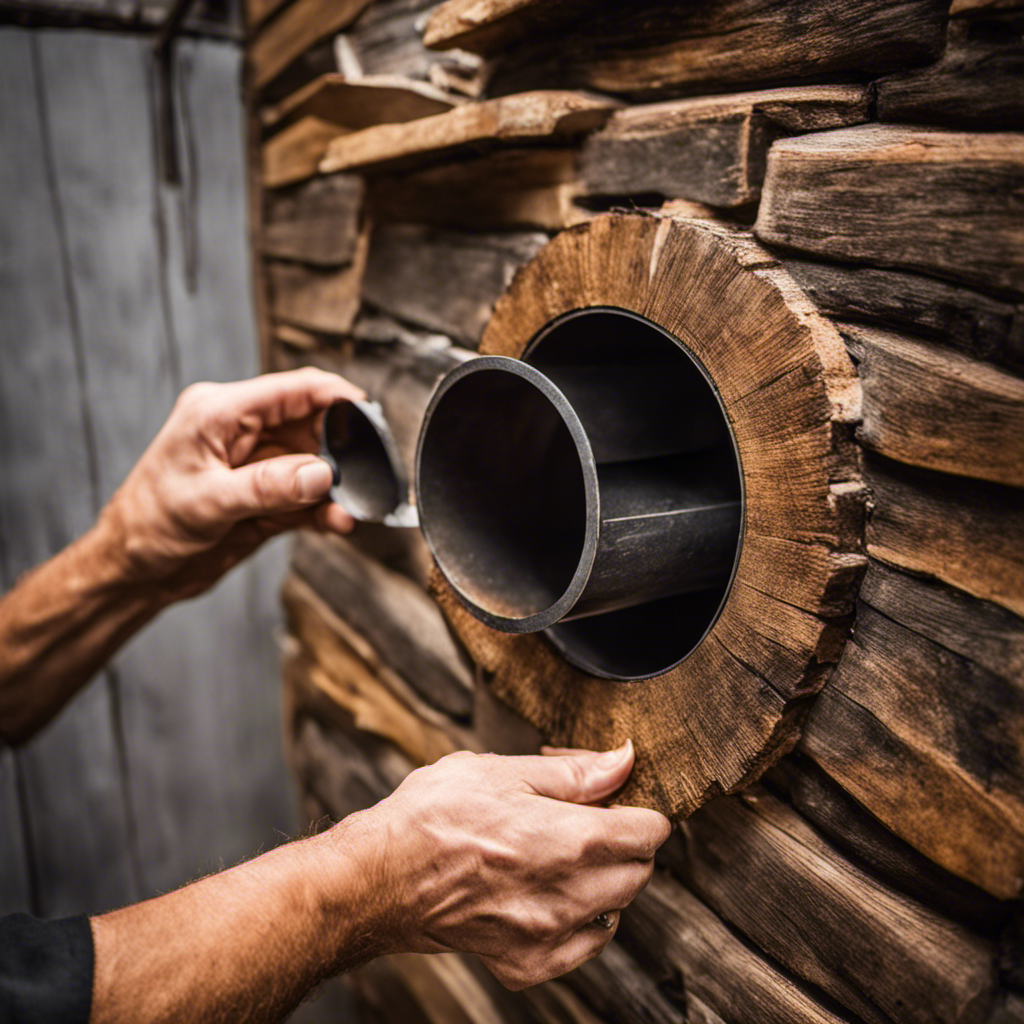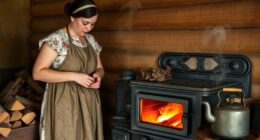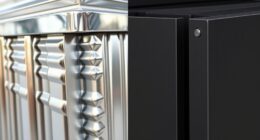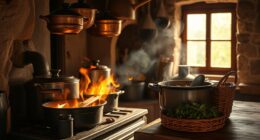
Considering using standard paint on your wood stove? I have to mention, that might not be the best decision.
Using regular paint on a wood stove can lead to a whole host of problems. From the risk of fire hazards and toxic fumes to damaging the stove surface and decreasing its efficiency, it’s definitely not worth it.
Oh, and did I mention it could even void the manufacturer’s warranty? Trust me, you’ll want to think twice before reaching for that can of paint.
Key Takeaways
- Using regular paint on a wood stove increases the risk of fire due to the paint’s inability to withstand high temperatures.
- Regular paint on a wood stove can release toxic fumes, such as volatile organic compounds (VOCs), which are harmful to human health and contribute to air pollution.
- Applying regular paint to a wood stove surface can lead to scratching, damage, and paint flaking, compromising the stove’s appearance and integrity.
- Regular paint on a wood stove can decrease its efficiency and performance, resulting in reduced heating capacity, increased fuel consumption, and higher heating costs.
Potential Fire Hazard
I’ve read that using more than one layer of regular paint on a wood stove can increase the potential fire hazard. Fire safety precautions should always be a top priority when it comes to wood stoves. Regular paint isn’t designed to withstand the high temperatures that a wood stove can reach. When exposed to these extreme temperatures, regular paint can start to degrade and release harmful fumes. This can’t only pose a risk to your health but also increase the chances of a fire starting.
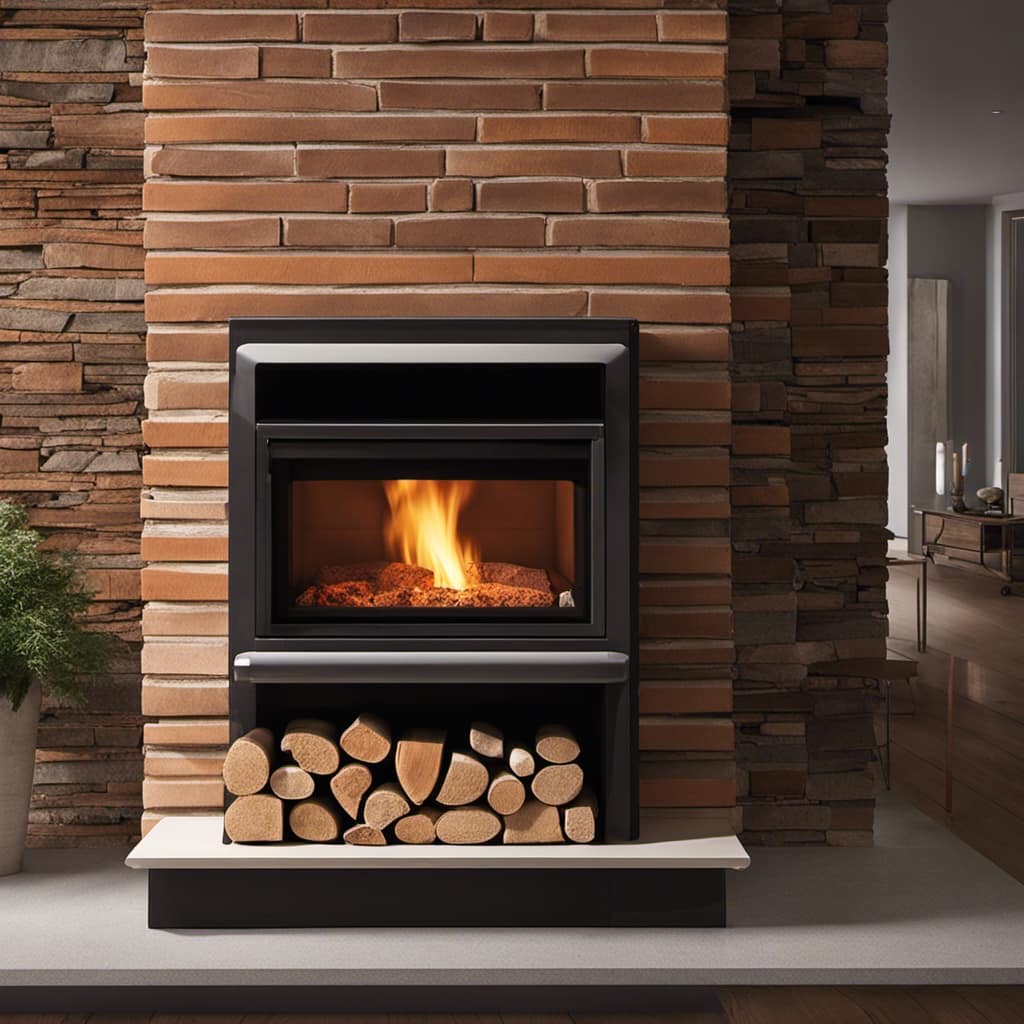
Proper maintenance of your wood stove is crucial to ensure its safe operation. Using high-temperature paint specifically designed for wood stoves is essential to minimize the potential fire hazard and maintain the longevity of your stove. Always follow manufacturer guidelines and consult with experts to ensure you’re taking the necessary precautions for fire safety.
Risk of Toxic Fumes
What are the potential risks of toxic fumes and how can they be minimized when using regular paint on a wood stove?
-
Health risks: When regular paint is used on a wood stove, it can release toxic fumes that are harmful to human health. These fumes contain volatile organic compounds (VOCs) such as benzene and formaldehyde, which can cause respiratory problems, headaches, and even long-term health issues.
-
Environmental impact: Regular paint contains chemicals that are harmful to the environment. When these paints are applied to a wood stove, the fumes can be released into the air and contribute to air pollution. Additionally, improper disposal of leftover paint can contaminate water sources and harm aquatic life.
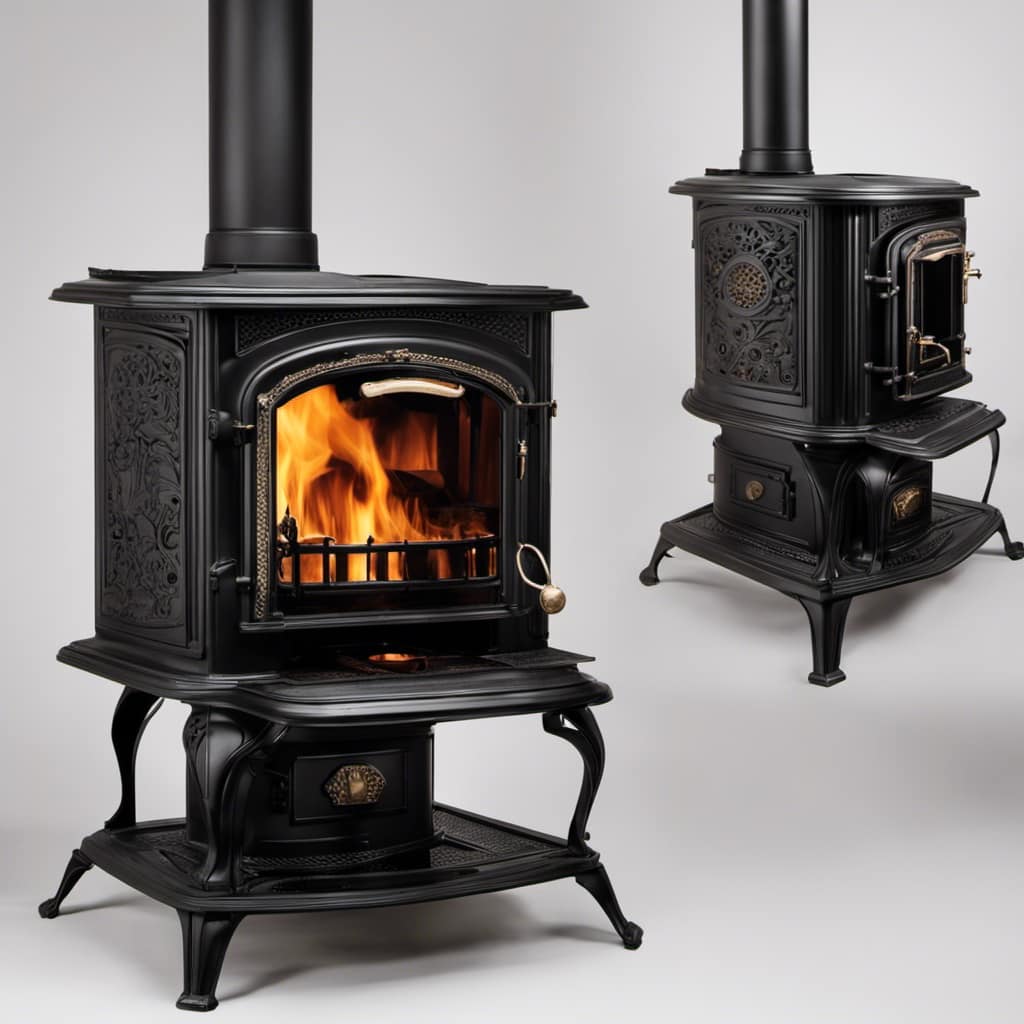
-
Minimizing the risks: To minimize the risks of toxic fumes when painting a wood stove, it’s recommended to use heat-resistant paint specifically designed for this purpose. These paints are formulated to withstand high temperatures and emit fewer harmful fumes. It’s also important to ensure proper ventilation during the painting process to reduce exposure to fumes. Finally, any leftover paint should be disposed of responsibly, following local regulations for hazardous waste.
Damage to Stove Surface
Using abrasive cleaners or scrubbing too vigorously can result in scratching the stove surface and causing damage. When it comes to maintaining the surface of a wood stove, it is important to use the right cleaning products and techniques. Regular paint should never be used on a wood stove as it is not designed to withstand the high temperatures reached during operation. This can lead to surface discoloration and even paint flaking, which not only affects the appearance but also compromises the integrity of the stove. To illustrate the potential consequences of using regular paint, consider the following table:
| Problem | Consequence | Solution |
|---|---|---|
| Surface Discoloration | Unsightly appearance | Use high-temperature stove paint |
| Paint Flaking | Compromised stove integrity | Strip off the regular paint and apply high-temperature stove paint |
| Decreased Efficiency and Performance | Inefficient heat transfer | Clean and maintain the stove regularly |
Decreased Efficiency and Performance
Since regular paint isn’t designed for wood stoves, using it can result in decreased efficiency and performance. Here are three reasons why using regular paint on a wood stove isn’t recommended:
-
Reduced Heating Capacity: Regular paint isn’t heat-resistant and can start to break down when exposed to high temperatures. This can lead to a decrease in the stove’s ability to transfer heat to the surrounding area, resulting in reduced heating capacity.

-
Increased Fuel Consumption: When the stove’s efficiency is compromised due to regular paint, it may require more fuel to maintain the desired temperature. This can lead to increased fuel consumption and higher heating costs.
-
Potential Health and Safety Issues: Regular paint can release harmful fumes when exposed to high temperatures. These fumes can be harmful to your health and may pose a safety risk. It’s essential to use heat-resistant paint specifically designed for wood stoves to ensure the safety and efficiency of your stove.
Voiding Manufacturer’s Warranty
I accidentally spilled water on my wood stove, which ended up voiding the manufacturer’s warranty. This incident raised concerns about the effect on paint longevity and the impact on resale value.
When it comes to wood stoves, the paint used on the exterior is specifically designed to withstand high temperatures and provide protection against corrosion. Regular paint, on the other hand, lacks the necessary heat resistance and durability required for this application.
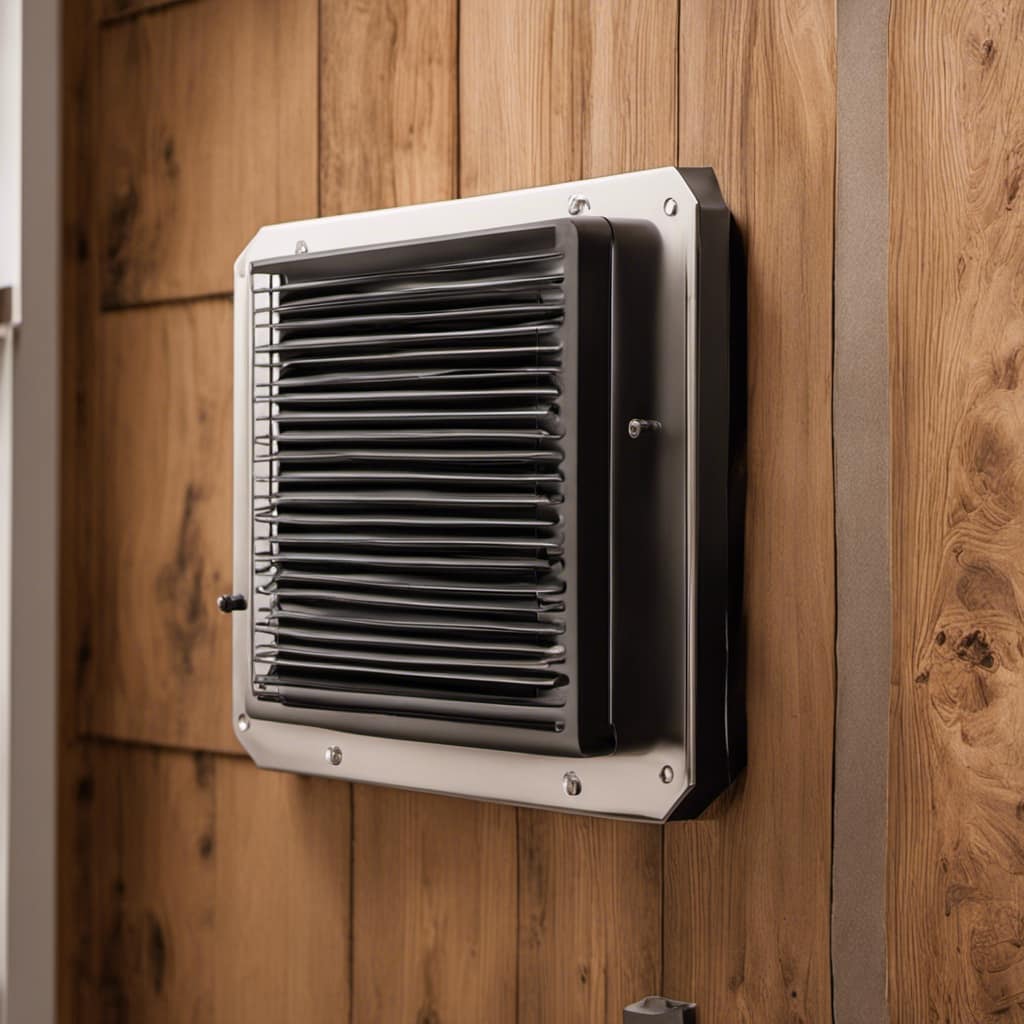
Applying regular paint to a wood stove can lead to premature peeling, discoloration, and even flaking, compromising the overall aesthetics and functionality of the stove. Additionally, using regular paint on a wood stove can significantly decrease its resale value, as potential buyers may view it as a sign of improper maintenance and potential future issues.
To ensure the longevity and resale value of a wood stove, it’s crucial to use the recommended heat-resistant paint as specified by the manufacturer.
Frequently Asked Questions
Can I Use Regular Paint on a Wood Stove if I Only Paint the Exterior and Avoid the Interior Surfaces?
If I only paint the exterior and avoid the interior surfaces, using regular paint on a wood stove may not be ideal. However, it’s important to consider toxicity concerns and ensure the paint is heat resistant to prevent any potential hazards.
Are There Any Non-Toxic Paint Options Available for Wood Stoves?
There are safe and effective alternatives to regular paint for wood stoves. Different non-toxic paint options have their pros and cons. Let me discuss the options and help you make an informed choice.
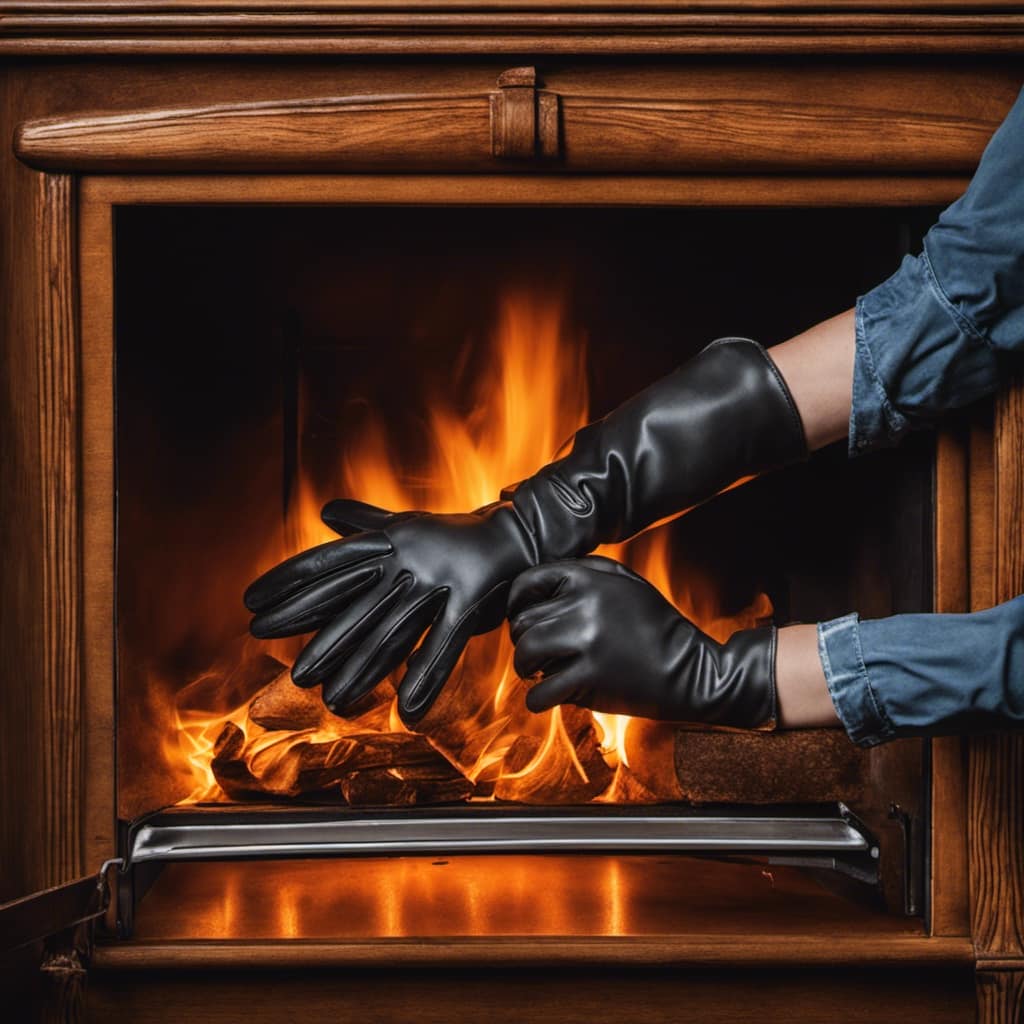
How Often Should I Repaint My Wood Stove to Maintain Its Performance?
To maintain optimal performance, it’s important to repaint your wood stove periodically. The frequency depends on factors such as usage and environmental conditions. Using the best paint specifically designed for wood stoves is crucial for durability and heat resistance.
Will Using Regular Paint on My Wood Stove Affect the Resale Value of the Appliance?
Using regular paint on a wood stove is like wearing flip flops in a snowstorm. It won’t affect resale value, but it will lead to peeling, chipping, and a sad-looking stove. Repaint with heat resistant paint for safety and aesthetics.
Can I Still Use My Wood Stove if I Accidentally Used Regular Paint on It?
Yes, you can still use your wood stove if you accidentally used regular paint on it. However, it is important to remove the paint without damaging the stove. Consult a professional for guidance on how to do this properly.
Conclusion
Using regular paint on a wood stove can have serious consequences. It poses a potential fire hazard and risks the release of toxic fumes. It also damages the stove surface and compromises its efficiency and performance. Moreover, it voids the manufacturer’s warranty.

This ill-advised choice can lead to disastrous outcomes and should be avoided at all costs.
Growing up surrounded by the vast beauty of nature, Sierra was always drawn to the call of the wild. While others sought the comfort of the familiar, she ventured out, embracing the unpredictable and finding stories in the heartbeat of nature.
At the epicenter of every remarkable venture lies a dynamic team—a fusion of diverse talents, visions, and passions. The essence of Best Small Wood Stoves is crafted and refined by such a trio: Sierra, Logan, and Terra. Their collective expertise has transformed the platform into a leading authority on small wood stoves, radiating warmth and knowledge in equal measure.




